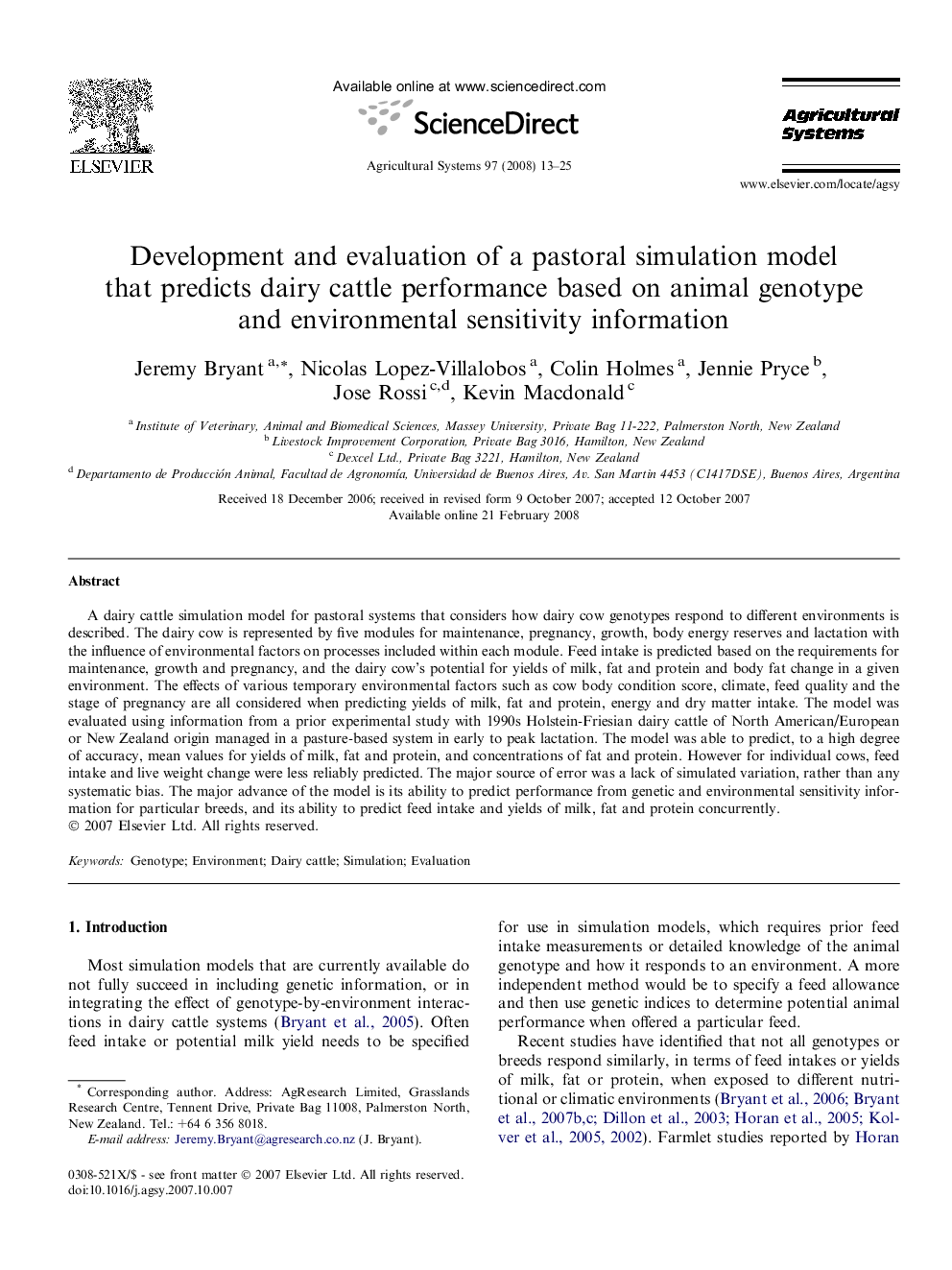| Article ID | Journal | Published Year | Pages | File Type |
|---|---|---|---|---|
| 4491838 | Agricultural Systems | 2008 | 13 Pages |
A dairy cattle simulation model for pastoral systems that considers how dairy cow genotypes respond to different environments is described. The dairy cow is represented by five modules for maintenance, pregnancy, growth, body energy reserves and lactation with the influence of environmental factors on processes included within each module. Feed intake is predicted based on the requirements for maintenance, growth and pregnancy, and the dairy cow’s potential for yields of milk, fat and protein and body fat change in a given environment. The effects of various temporary environmental factors such as cow body condition score, climate, feed quality and the stage of pregnancy are all considered when predicting yields of milk, fat and protein, energy and dry matter intake. The model was evaluated using information from a prior experimental study with 1990s Holstein-Friesian dairy cattle of North American/European or New Zealand origin managed in a pasture-based system in early to peak lactation. The model was able to predict, to a high degree of accuracy, mean values for yields of milk, fat and protein, and concentrations of fat and protein. However for individual cows, feed intake and live weight change were less reliably predicted. The major source of error was a lack of simulated variation, rather than any systematic bias. The major advance of the model is its ability to predict performance from genetic and environmental sensitivity information for particular breeds, and its ability to predict feed intake and yields of milk, fat and protein concurrently.
